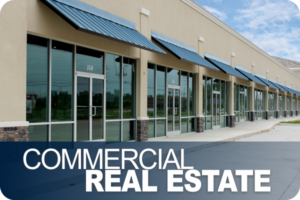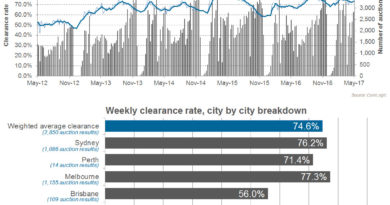What you may have missed on budget day (and why it is good news for commercial real estate)
A backdrop of rising home and energy prices against record low rage growth of 1.9% is putting increasing financial pressure on Australian families. This makes the federal budget as important as ever, as Australians navigate living with their (deteriorating) means.
However, those fixated on Tuesday’s budget may have missed an important report that was released just hours beforehand:
The Foreign Investment Review Board (FIRB) 2015-16 report.
Australia has a complex relationship with foreign investment. When comparing the federal budget with the report handed down by FIRB, it becomes clear that there is no intention to reduce foreign investment in Australia. Rather, the policies aim to divert foreign investment to more productive sectors.
Aussie homes for Aussies
The budget was dripping with rhetoric of prioritizing Australians and Australian ownership, especially in housing.
New residential developments will have a 50% limit on the dwellings that can be sold to foreign investors. A finer point of this policy – not highlighted in Morrison’s speech – was that in order for the 50% limit to apply, the development would have to be multi-story, and over 50 dwellings. According to CoreLogic, of the 15,481 new apartment projects expected to be completed in the next two years, only 9.4% have 50 or more dwellings. However, the 9.4% of projects represent 57% of the total number of individual units expected be completed.
It is widely unknown what portion of the residential market is made up of foreign investment in the first place. However, developer anecdotes suggest that large apartment projects are often marketed specifically throughout Asia, where there is a larger pool of capital. A limit on foreign investment in new property may force developers to simultaneously target domestic investors.
Another fiscal measure is the introduction of a fee to foreigners who own vacant property. Depending on the size and value of the property, these fees can range from 5%-10% of the property value, with lower fees skewed towards more expensive properties.
Finally, foreign and temporary tax residents will stop receiving capital gains concessions after the 2018-19 financial year. Foreign investors selling a property will pay a higher level of capital gains at a lower threshold.
Between these policies, a hypothetical, apartment in Sydney at a median sale price of $700,000 could have added transaction costs of approximately $5,000 per year if it was left vacant.
Foreign investment in Australia is stronger than ever
The FIRB report on the other hand, positively framed the growth in foreign investment across a range of Australian segments. In the 2015-16 financial year, approximately $248 billion in foreign investment proposals were approved by FIRB, across 14,445 proposals. This represents approximately 18% of GDP over the year. It also represents a 30% increase on the value of foreign investment applications on the previous year.
The report also indicated that of the 41,450 foreign investment applications considered, five were rejected, suggesting no shortage of appetite for foreign investment.
In the residential real estate space, foreign investment applications made up a combined value of $72.4 billion. CoreLogic new property sales multiplied by new property median prices suggest an estimated value of $74.1 billion new property transacted in Australia over the same period. While this could mean a large number of new sales were part of a foreign investment purchase, not all applications translate to transactions, and not all applications are for newly built property.
Commercial real estate is growing faster than residential for foreign investor investment applications
While the residential real estate segment was the largest asset to attract foreign investment applications at $72.4 billion, commercial real estate had a faster year on year growth at 37.3%. Residential application values grew just 20%.
In the commercial real estate segment, approximately $50 billion worth of applications was approved by FIRB. New South Wales attracted the most investment at $13 billion.
The budget was less likely to cover commercial real estate because commercial real estate is not as sensitive as housing. Whereas housing represents a complex spectrum between a well-performing financial asset and a necessary social good, commercial real estate largely speaks to the former.
Furthermore, investment in commercial real estate is more productive for the economy as a whole: it facilitates trade and business. The more commercial real estate is available, the more property managers must provide incentives or innovations in the space to attract tenants.
With the budget outlining higher barriers to foreign investment in residential assets, foreign capital is more likely to divert to alternative assets.
Eliza Owen
Commercial Research Analyst
Subscribe to the free Commercial Pulse eNewsletter
Get the latest commercial news and sales data each week from our CoreLogic Commercial Pulse! Click here to subscribe
Source: CoreLogic Feed





